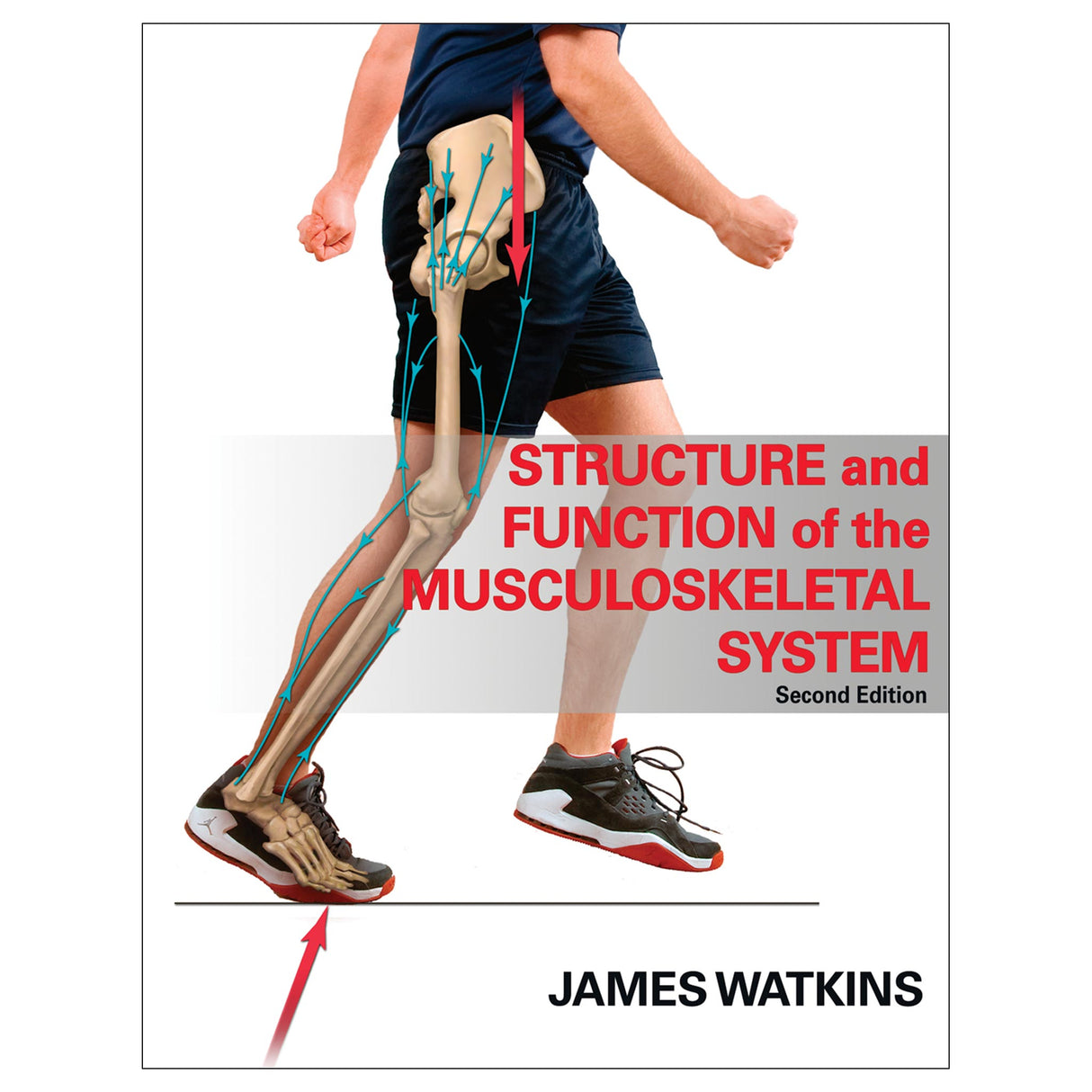Structure and Function of the Musculoskeletal System 2nd Edition PDF
Author: James Watkins
$112.95 CAD
Access Duration: 10 Years
Written by James Watkins, an authority on functional anatomy, Structure and Function of the Musculoskeletal System, Second Edition,integrates anatomy and biomechanics to describe the intimate relationship between the structure and function of the musculoskeletal system. This unique reference thoroughly explores the biomechanical characteristics of musculoskeletal components and the response and adaptation of these components to the physical stress imposed by everyday activities. Following a systematic approach, Structure and Function of the Musculoskeletal System describes
the basic composition and function of the musculoskeletal system; mechanical concepts and principles that underlie human movement; functional anatomy of the skeletal, connective tissue, articular, and neuromuscular systems; mechanical characteristics of musculoskeletal components; structural adaptation of musculoskeletal components; and the etiology of musculoskeletal disorders and injuries.
Also available as an e-book, the second edition of Structure and Function of the Musculoskeletal Systemfeatures nearly 700 detailed, full-color illustrations showing key structures and biomechanical properties of the musculoskeletal system. Elementary biomechanical concepts are incorporated throughout the text, offering readers a more integrated understanding of how forces are created and relayed by the components of the musculoskeletal system.
The second edition of Structure and Function of the Musculoskeletal System also includes new information on the effects of aging on muscle function as well as a new appendix with illustrations of each muscle group and tables detailing the origin, insertion, and action of individual muscles. In addition, several new case studies illustrate the response and adaptation of the musculoskeletal system to exercise at various ages and in various situations. These case studies present current research and how the findings can be put to practical use in physical activity, competitive sport, rehabilitation, and activities of daily living.
Students new to anatomy or biomechanics will benefit from the book's reader-friendly structure featuring applied examples, summaries, review questions, references, an extensive subject index, and a glossary that runs parallel to the text. Learning objectives at the beginning of each chapter identify the key topics, and interesting facts and key points are set off within highlight boxes throughout the text. Highlighted introductory figures assist readers in understanding content as they refer to a sequence of subsequent figures while reading the text. Plus, nearly all the images from the text are included in an image bank that is free to instructors who adopt the text.
Structure and Function of the Musculoskeletal System, Second Edition,offers readers a clear conception of how the components of the musculoskeletal system coordinate to produce movement and continuously adapt their structure to the strain of everyday physical activity as well as the effects of aging. Illustrated with full-color detail, this unique resource will assist both future and current professionals in the diagnosis and treatment of musculoskeletal disorders by enhancing their understanding of the relationship between the structure and function of the musculoskeletal system.
Preface
Acknowledgments
Part I. Functional Anatomy of the Musculoskeletal System
Chapter 1.The musculoskeletal system
Unicellular and multicellular organisms
Cellular organization in multicellular organisms
Composition and Function of the Musculoskeletal System Summary
Review questions
Chapter 2.The Skeleton
Terminology
Axial skeleton
Appendicular skeleton
Summary
Review questions
Chapter 3.Connective tissues
Functions of connective tissues
Ordinary connective tissues
Cartilage
Bone
Summary
Review questions
Chapter 4.The articular system
Structural classification of joints
Joint movements
Stability-flexibility classification of joints
Synovial joint classification
Flexibility, stability, and laxity in synovial joints
Summary
Review questions
Chapter 5.Joints of the axial skeleton
Joints between the vertebrae
Degeneration and damage in the vertebral column
Normal shape of the vertebral column
Abnormal curvature of the vertebral column
Joints of the pelvis
Summary
Review questions
Chapter 6.Joints of the appendicular skeleton
Joints and joint complexes
Shoulder complex
Elbow complex
Wrist complex
Hip joint
Knee complex
Rearfoot complex
Summary
Review questions
Chapter 7.The neuromuscular system
nervous system
Skeletal muscle structure
Muscle fiber structure and function
Kinesthetic sense and proprioception
Mechanical characteristics of musculotendinous units
Muscle architecture and function
Stretch-shorten cycle
Summary
Review questions
Part II. Musculoskeletal response and adaptation to loading
Chapter 8.Elementary biomechanics
Mechanics and biomechanics
Center of gravity
Stability
Center of pressure
Vector and scalar quantities
Moment of a force
Levers
Summary
Review questions
Chapter 9. Forces in muscles and joints
Selective recruitment of motor units to match functional requirements
Forces acting on the head in upright postures
moment of external forces versus the magnitude of internal forces
Forces about the hip joint in One-leg stance
Effect of squat and stoop postures on forces in the lumbar region
Swing and stabilization components of muscle force
Summary
Review questions
Chapter 10.Mechanical characteristics of musculoskeletal components
Stress - strain relationships in solids
Work, Strain Energy, and Kinetic Energy
Viscosity and viscoelasticity
Active and passive loading
Impact and Shock
Summary
Review questions
Chapter 11.Structural adaptation of the musculoskeletal system
Adaptation
Biopositive and bionegative effects of loading
Response and adaptation of musculoskeletal components to loading
Summary
Review questions
Chapter 12.Etiology of musculoskeletal disorders and injuries
Kinetic chain
Compensatory movements
Risk factors for Musculoskeletal Disorders
Summary
Review questions
Appendix
References
Index
About the Author
Structure of the knee facilitates extension and flexion
Youth sports increase risk of physeal injury
Image bank. Features most of the nearly 700 illustrations from the text, sorted by chapter. The images can be used for developing a customized presentation based on specific course requirements. A blank PowerPoint template is also provided, along with easy-to-follow instructions for quickly creating a presentation.





